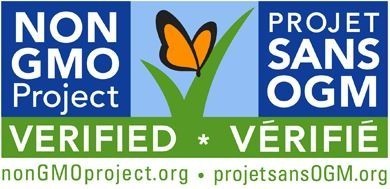
Understanding Labels
With all the information packed onto product labels, it’s important to understand what is regulated and what is just marketing.
The Canadian Food Inspection Agency regulates food labelling in Canada. While information on ingredients and nutrition facts are mandatory, information on the method of production is not. As a result, marketers are free to create terms that appeal to consumers - like “all natural” or “hormone free” - without these terms being certified or regulated.
Certified Labels
|
|
Organic Organic is a regulated term. An organic label guarantees that the product was produced following the Canadian Organic Standards and that the production process has been certified by a third party (the certifying body). The label must display the name or logo of the certifying body that granted organic certification. It may also display the Canada Organic logo. Food labelled “organic” has been produced without synthetic pesticides, GMOs, or artificial colours or flavours. All organically raised animals have room to express natural behaviours, have access to the outdoors and are fed an organic diet. Meat animals are never treated with antibiotics. All grazing animals (cows, sheep, goats) are required to have access to pasture during the grazing season. |
 |
Non-GMO Genetically modified foods do not need to be labelled in Canada. A company that does not use GMOs may choose to be verified through the non-GMO project and display the butterfly logo on their label. This logo verifies that the product was produced with best practices to avoid GMOs. All certified organic products are non-GMO; they do not need a separate verification through the non-GMO project. |
 |
Fairtrade The FairTrade logo indicates that the product meets the economic, social, and environmental criteria defined by the Fairtrade Standards. These standards help ensure that small-scale farmers and workers at the start of the supply chain are paid and treated fairly. |
Non-certified Labels
The following labels are not certified by any third party regulatory agency.
Natural: The term “natural” is not defined in regulation. The Canadian Food Inspection Agency supplies loose guidelines indicating that food should be “minimally processed” but gives companies the option to only partially follow the guidelines.
Cage-free and Free-run: Animals are raised cage-free and indoors but conditions are not specified. Applies to chickens and pigs.
Free-range: Animals are raised cage-free with outdoor access when the weather is good. The quality and quantity of outdoor time is not monitored. Applies to chickens and pigs.
Pasture-raised / Pastured: Animals are raised cage-free outdoors on pasture for some part of their lives. Cattle may still be finished in a feedlot eating grain.
Grass-fed: Animals have access to pasture and a diet made up of forages (grass and hay) for some part of their lives. Cattle may still be finished in a feedlot eating grain.
100% Grass-fed: Animals have access to pasture and a diet made up of forages (grass and hay) for their entire lives. Again, this term is not certified or regulated.
Antibiotic-free: Animals have met a specific antibiotic withdrawal period prior to being slaughtered.
How does organic compare?
All organically raised grazing animals (cows, sheep, goats) are required to have access to pasture during the grazing season and access to the outdoors all year round, weather permitting. Organic standards do not prohibit finishing cattle on grain but do require that animals have time on pasture in season and be fed a minimum of 60% forages. Many organic producers choose to raise their cattle without feeding grain. Organic meat animals are never treated with antibiotics or growth hormones.
